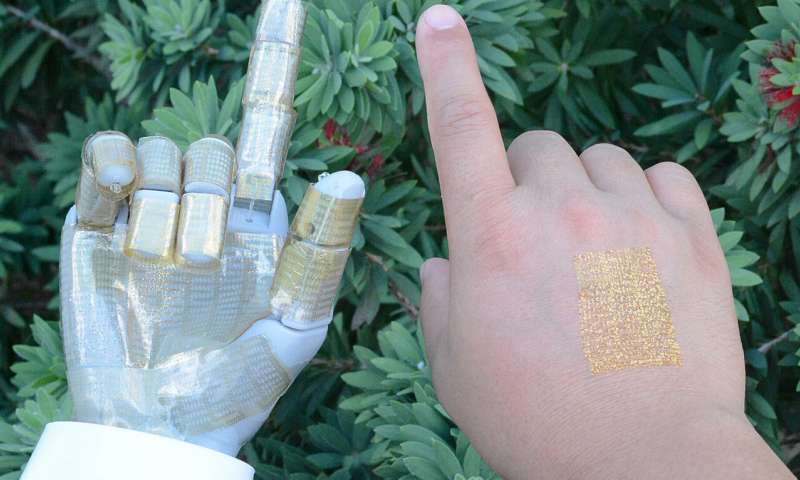
Technique uses magnets, light to control and reconfigure soft robots (05/08/2019)
Researchers
from North Carolina State University and Elon University have developed a
technique that allows them to remotely control the movement of soft robots,
lock them into position for as long as needed and later reconfigure the robots
into new shapes. The technique relies on light and magnetic fields.

A wearable device so thin and soft you won't even notice it (05/08/2019)
Wearable
human-machine interfaces—devices that can collect and store important health
information about the wearer, among other uses—have benefited from advances in
electronics, materials and mechanical designs. But current models still can be
bulky and uncomfortable, and they can't always handle multiple functions at one
time.

'Limitless potential' of artificial protein ushers in new era of 'smart' cell therapies (28/07/2019)
A
first-of-its-kind artificial protein -- designed on a computer and synthesized
in the lab -- can be used to build brand-new biological circuits inside living
cells. These circuits transform ordinary cells into smart cells that are
endowed with remarkable abilities.

Calculating the properties of molecules on a noisy quantum computer (28/07/2019)
The
large, error-correcting quantum computers envisioned today could be decades
away, yet experts are vigorously trying to come up with ways to use existing
and near-term quantum processors to solve useful problems despite limitations
due to errors or "noise."

Engineers discover lead-free perovskite semiconductor for solar cells using data analytics, supercomputers (28/07/2019)
Solar
panel installations are on the rise in the U.S., with more than 2 million new
installations in early 2019, the most ever recorded in a first quarter,
according to a recent report by Solar Energy Industries Association and Wood
Mackenzie Power & Renewables.

Physicists count sound particles with quantum microphone (27/07/2019)
Stanford
physicists have developed a "quantum microphone" so sensitive that it
can measure individual particles of sound, called phonons.

New sensor network reveals telltale patterns in neighborhood air quality (23/07/2019)
Black
carbon, commonly known as soot, is a significant contributor to global warming
and is strongly linked to adverse health outcomes. Produced by the incomplete
combustion of fuels—emitted from large trucks, trains, and marine vessels—it is
an air pollutant of particular concern to residents in urban areas. Sensors
available on the market today are expensive, making black carbon difficult to
track.

Scientists make fundamental discovery to creating better crops (23/07/2019)
A
team of scientists led by the Department of Energy's Oak Ridge National
Laboratory have discovered the specific gene that controls an important
symbiotic relationship between plants and soil fungi, and successfully
facilitated the symbiosis in a plant that typically resists it.
A new material for the battery of the future (21/07/2019)
Researchers
have discovered a new high performance and safe battery material (LTPS) capable
of speeding up charge and discharge to a level never observed so far.
Practically, if the first tests are confirmed, this new material could be used
in the batteries of the future with better energy storage, faster charge and
discharge and higher safety targeting many uses from smartphones, to electric
bicycle and cars.

New e-skin innovation gives robots and prosthetics an exceptional sense of touch (20/07/2019)
Robots
and prosthetic devices may soon have a sense of touch equivalent to, or better
than, the human skin with the Asynchronous Coded Electronic Skin (ACES), an
artificial nervous system developed by a team of researchers at the National
University of Singapore (NUS).









